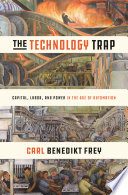

The book discusses how technological advancements have historically led to significant disruptions in economies and societies. It outlines the dual nature of technology as a force for both progress and displacement. The author illustrates how previous industrial revolutions caused job losses in certain sectors while creating opportunities in others. This cyclical pattern of disruption is a crucial theme, highlighting the need for societies to adapt to technological changes rather than resist them. The narrative includes historical examples, such as the transition from agrarian economies to industrial ones, and how these shifts have continuously reshaped labor markets and economic structures. The author argues that understanding these patterns is essential for navigating the current technological landscape, especially with the rise of AI and automation.
Continue readingThe book emphasizes the importance of policy frameworks in managing the impact of technology on the workforce. It argues that governments play a critical role in facilitating transitions for displaced workers through education, retraining programs, and social safety nets. The author critiques the often reactive nature of policy responses to technological changes and advocates for proactive measures that anticipate future disruptions. By examining past policy decisions, the book demonstrates how effective governance can mitigate the adverse effects of technological change, ensuring that the benefits are widely distributed across society. The discussion includes case studies of various countries and their approaches to managing technological transitions, providing valuable lessons for policymakers today.
Continue readingAutomation is a central theme in 'The Technology Trap,' where the author explores its profound social implications. The book outlines how automation can exacerbate inequality, as the benefits of increased productivity are often concentrated among a small group of capital owners. It discusses the psychological and social effects of job displacement, including loss of identity and community ties. The author argues for a more inclusive approach to technological advancement, one that considers the well-being of all citizens. This includes fostering a dialogue about the future of work and the need for a societal consensus on the direction of technological development. The book calls for a reevaluation of our values in the face of automation and encourages a collective responsibility towards those affected by these changes.
Continue readingOne of the key ideas is that history provides valuable lessons for understanding and addressing the challenges posed by new technologies. The author draws parallels between past technological revolutions and today's advancements in AI and robotics. By examining the responses to previous disruptions, such as the Luddites' resistance to mechanization, the book illustrates the importance of learning from history to inform current strategies. The author argues that while technology can drive progress, it is essential to approach it with caution and foresight. This historical perspective encourages readers to think critically about the current technological landscape and to advocate for solutions that prioritize human welfare alongside innovation.
Continue readingEducation is highlighted as a crucial factor in adapting to technological change. The book argues for a shift towards lifelong learning, where individuals continuously update their skills to remain relevant in an evolving job market. The author discusses the limitations of traditional education systems in preparing students for the future and calls for a reimagining of educational pathways. This includes integrating technology into learning environments and fostering critical thinking and adaptability. By promoting a culture of lifelong learning, societies can better equip their citizens to navigate the complexities of a technology-driven world. The book provides examples of innovative educational models and initiatives that have successfully embraced this approach.
Continue readingThe book delves into the ethical considerations surrounding technological advancements, particularly in relation to AI and automation. The author raises important questions about accountability, bias, and the moral implications of deploying technology in various sectors. It argues that ethical frameworks must be established to guide the development and implementation of new technologies. The discussion includes the responsibilities of technologists, businesses, and governments in ensuring that technology serves the common good. By addressing these ethical dimensions, the book aims to foster a more responsible approach to innovation that prioritizes human dignity and societal well-being.
Continue readingThe book concludes with a forward-looking perspective on the future of work in light of ongoing technological advancements. It discusses potential scenarios for the labor market, emphasizing the need for adaptability and resilience among workers. The author advocates for a collaborative approach between businesses, governments, and educational institutions to create a more equitable future of work. This includes exploring alternative work arrangements, such as gig economy jobs and remote work, and their implications for workers' rights and benefits. The book encourages readers to envision a future where technology enhances human capabilities rather than replaces them, fostering a more inclusive and sustainable economy.
Continue reading